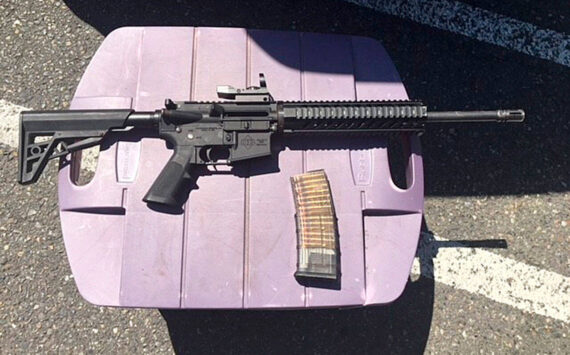“The opening of a large new marine terminal and the arrival of the largest containerships in the world helped the Port of Tacoma to set a new record of 1.27 million container TEUs – 20-foot equivalent units – in 1999, nearly a 10 percent increase over 1998’s container volume.Containers being transported to or from international locations accounted for 65 percent of the Port’s total volume, while containers moving between Tacoma and Alaska accounted for the remaining 35 percent. The volume of Alaskan container traffic rose by 1.8 percent in 1999 reaching a total of 443,000 TEUs.International container traffic grew by 14.8 percent, reaching 828,000 TEUs. Import container volumes rose by 11 percent and export containers jumped by 19 percent over 1998 levels. International container volume for 1999 was almost equally divided between imports and exports.The value of two-way trade through the Port of Tacoma reached $19.67 billion in 1999. International imports valued at $12.79 billion and exports worth $3.4 billion flowed through the port. Cargo transported to and from Alaska through Tacoma had a value of $3.48 billion.The Port of Tacoma’s fastest growing trading partner for the past year was China, with $2.98 billion of two-way trade through Tacoma – up 27 percent over 1998.The upsurge in container volumes in Tacoma is partially attributed to the May opening of the Port’s newest container handling facility – Washington United Terminals. The terminal handles vessels and containers for Hyundai Merchant Marine of Korea.The 60-acre terminal works three vessels a week and dispatches containers via rail from a 12-acres dockside intermodal rail yard. WUT has announced it will work with the Port to expand its terminal by another 20 acres.Growth and mergers were reported by each of the Port’s container shipping customers in 1999 too. Denmark-based Maersk Line and U.S.-headquartered Sea-Land Service, two of the Port’s long-time customers, merged their companies in 1999 creating Maersk Sealand, reportedly the world’s largest container shipping line. Sea-Land’s domestic shipping operations were retained by its parent company, CSX Incorporated. Under the name of CSX Lines, the company continues to operate three Tacoma-based container vessels serving Alaska.The year 1999 saw the arrival in Tacoma of the largest container ships ever built – Maersk Sealand’s S Class ships. Each of the 10 ships are 1,038 feet long, 140 feet wide and have a capacity of 6,600 twenty-foot containers.The Port also initiated an expansion in 1999 of the terminal operated by Taiwan-based Evergreen Line. The facility will grow from its current 40 acres to a total of 75. Evergreen will also receive a new truck gate, additional reefer plugs and a new container crane.K Line, a Japan-based container carrier, introduced new larger ships to Tacoma during the past year, and Totem Ocean Trailer Express, or TOTE, a vessel operator serving Alaska, increased the number of acres it leases from the Port. TOTE has also announced plans to build two new ships, expected to enter into service in 2002.One of 1999’s most dramatic cargo increases came from the Port’s grain terminal on Ruston Way. Continental Grain, which had operated the facility since 1975, was purchased by Cargill Incorporated. The result was an impressive 93 percent rise in the volume of grain moving through Tacoma. Grain tonnage grew from 2.21 million short tons in 1998 to 4.2 million short tons in 1999.Automobile imports cruised upward 13 percent too, from 103,000 units in 1998 to 117,000 in 1999.The Port’s operating revenues for the year reached $57 million, 3 percent higher than in 1998. Operating income totaled $9.5 million, a 22 percent increase over 1998. Net income was $11.7 million.During 1999, a study was completed that outlines how Port of Tacoma facilities may expand over the course of the next 20 years to meet the requirements of customers and growth in trade. Vision 2020 outlines a variety of possible scenarios for expansion of existing facilities and creation of new terminals and cargo handling areas.”
More Stories From This Author
WA’s ban on assault weapon sales survives another challenge
A judge last month once again upheld Washington’s 2023 law banning the sale of certain semiautomatic firearms classified as assault…
By Jake Goldstein-Street, Washington State Standard • December 5, 2025 5:12 am
Trump administration sues WA for not sharing voter data
The Department of Justice on Tuesday sued Washington’s secretary of state over his refusal to provide personal information contained in…
By Jake Goldstein-Street, Washington State Standard • December 4, 2025 5:12 am
Muckleshoot Tribe hosts national MMIP coordinator gathering
MMIP refers to “Missing and Murdered Indigenous People,” an ongoing international crisis that has inspired tribal leaders from 13 states to come together on the Muckleshoot reservation.
By Bailey Jo Josie bailey.jo.josie@soundpublishing.com • December 3, 2025 5:20 am




